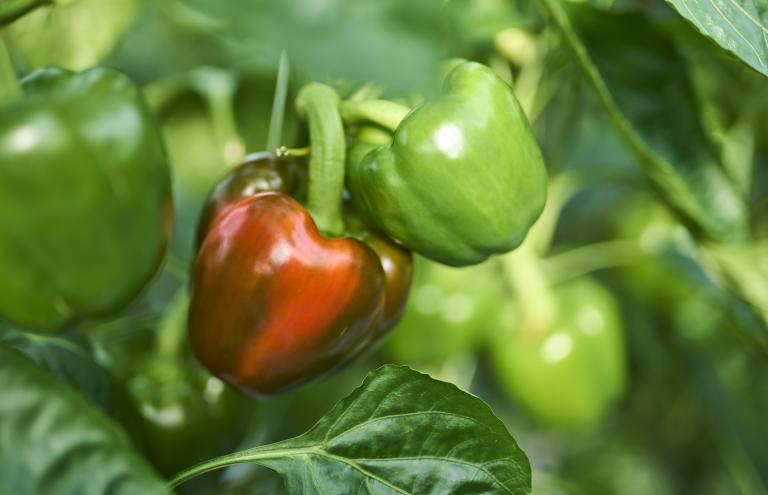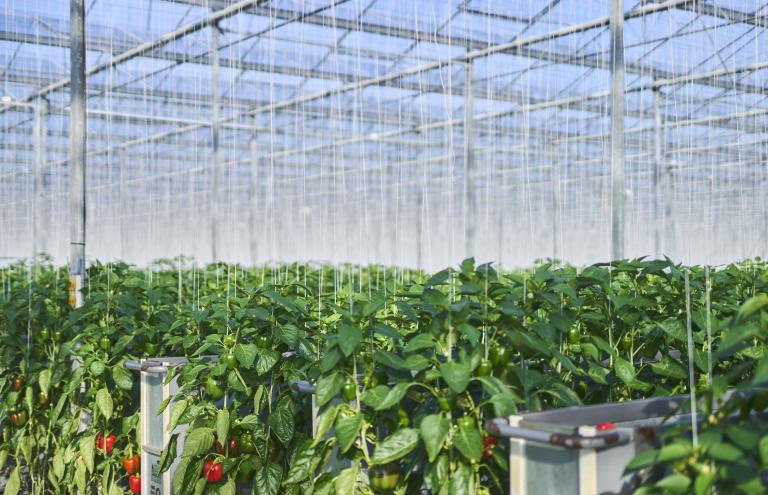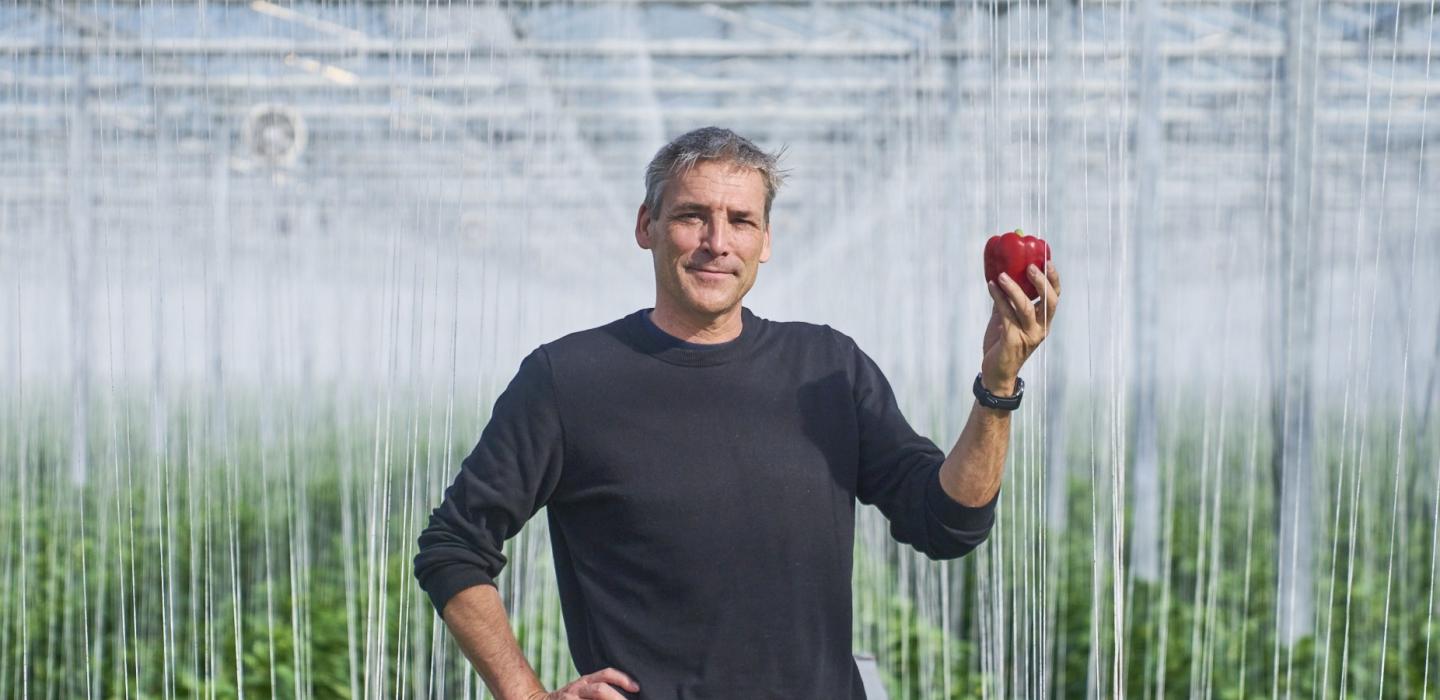
Our common bell peppers are anything but ordinary

“The common bell peppers,” Liesbet and Raf answer when we ask them what they farm here. Yet their delicious red and green varieties are anything but ordinary. Across 6.5 hectares, the team grow more than eight million delicious peppers every year.
“We had been successfully growing tomatoes for 20 years, but then the energy crisis hit,” Raf explains when asked how he and Liesbet began producing peppers. “Growing tomatoes with artificial lights was no longer profitable, so we started looking for a new crop – and that’s how we landed on bell peppers. Liesbet and Raf have 3 hectares of red peppers, and 3.5 hectares of green peppers. “We process 1.7 million kilos of sweet peppers every year, or approximately 8.5 million peppers.” says Raf. The fresher the pepper, the crispier, and the tastier. Eating the pepper as soon as possible after purchase is what Liesbet and Raf recommend. Fun fact: wonky peppers or peppers showing sunburn marks are sold for pizzas, among other things. And that way, nothing goes to waste in Liesbet and Raf’s pepper production.

“From planting to harvesting and cleaning up, the vegetables from these greenhouses are handled with the utmost care”, says Raf. “We try to work organically as much as possible. Sweet peppers are quite pest-prone and that’s why we use beneficial insects. We deploy a mix of about eight insects, such as ladybirds, gall midges and predatory bugs against aphids, spider mites and thrips, among others.” Our greenhouses are heated by cogeneration. “Our electricity comes from a natural gas engine, which produces a lot of heat”, says Raf. “The engine is cooled with water, which is used to heat the greenhouses. Any excess electricity is sold back to the grid. The smoke produced by the natural gas engine contains CO2, which we vent into the greenhouse because the plants use it as fertiliser, and convert it into oxygen. So, in terms of both electricity and heat, nothing goes to waste – we achieve 100% efficiency. We also collect the rainwater,” he adds.
So why do Liesbet and Raf find this work so enjoyable? “The diversity in our job is interesting. You are reliant on the weather and must adjust the climate according to the amount of sunshine each day. Not to mention, you need to ensure there are no pests lurking around. If a heat wave passes next week, the plant may well get out of balance. It takes years of experience to know exactly how to react in certain situations. Fortunately, we have it down to a tee.”
Funded by the European Union. Views and opinions expressed are however those of the author(s) only and do not necessarily reflect those of the European Union or the European Research Executive Agency (REA).
Neither the European Union nor the granting authority can be held responsible for them.


